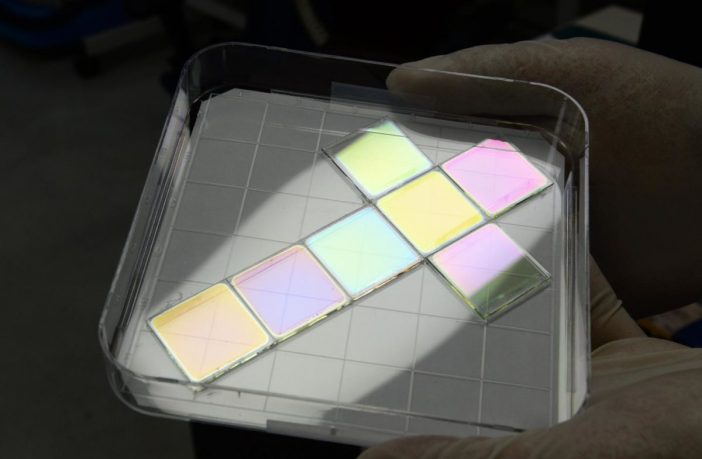- South Korean scientists manufactured the cell with the chemical bath deposition method, using different thiourea concentrations.
- For the buffer layer, they used zinc instead of cadmium sulfide. The cell is flexible and is available in seven different colors
Researchers from South Korea’s Electronics and Telecommunications Research Institute (ETRI) have developed a colored copper indium gallium selenide (CIGS) solar cell with an 18% conversion efficiency.
The new cell is purportedly more environmentally friendly, as its buffer layer is made of zinc instead of toxic cadmium sulfide (CdS), which is commonly used.
They manufactured the cell with the chemical bath deposition method (CBD), using different thiourea (TU) concentrations, the researchers said. CBD is a technique to produce films of solid inorganic, non-metallic materials on substrates by immersing the substrate in a precursor aqueous solution. Thiourea (TU) is a compound used in thin-film solar cells to achieve high-quality films in the film-deposition process.
Related: Danger! Cadmium found in thin film solar panels
“The solar cells showed a substantial increment in the performance after light soaking treatment,” the scientists said. “The performance increment was found to be in proportion to the TU mole concentration used in zinc layer deposition.”
They analyzed the results of the deposition process through X-ray photoemission spectroscopy (XPS) – the most widely used surface analysis technique to identify the elements that are present in a material. They found that a hollow band region was formed at the interface between the CIGS and CDB-zinc layers, which resulted in the suppression of electron-hole recombination and enhanced the cell efficiency.
The cell is available in seven different colors and can be coated on a flexible substrate or a glass substrate. “This means that they could be bent or folded, expanding applications as a next-generation eco-friendly energy source,” they explained.
They describe the cell in “Ultrafast wavelength-dependent carrier dynamics related to metastable defects in Cu(In,Ga)Se2 solar cells with chemically deposited Zn(O,S) buffer layer,” which was recently published in Nano Energy.
Author: Emiliano Bellini
This article was originally published in pv magazine and is republished with permission.















